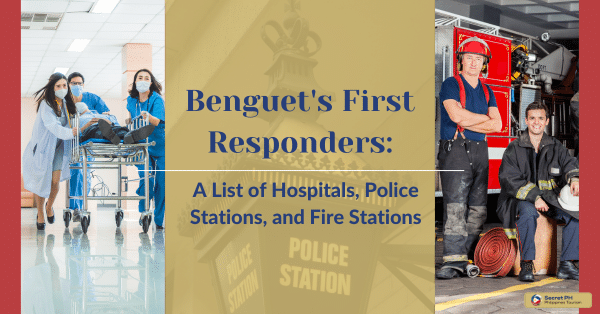Emergency services play a critical role in saving lives during medical emergencies. However, in rural areas, access to emergency services can be limited, resulting in poor healthcare outcomes and high mortality rates. In the Philippines, with over 50% of the population residing in rural areas, providing adequate emergency services to these communities is a challenging task.
Emergency services in rural areas in the Philippines face a multitude of challenges. From limited access to medical facilities, lack of trained medical personnel, and inadequate infrastructure.
In this blog post, we will explore ways to bridge the gap and improve emergency services in rural areas through technology, community involvement, and successful case studies.
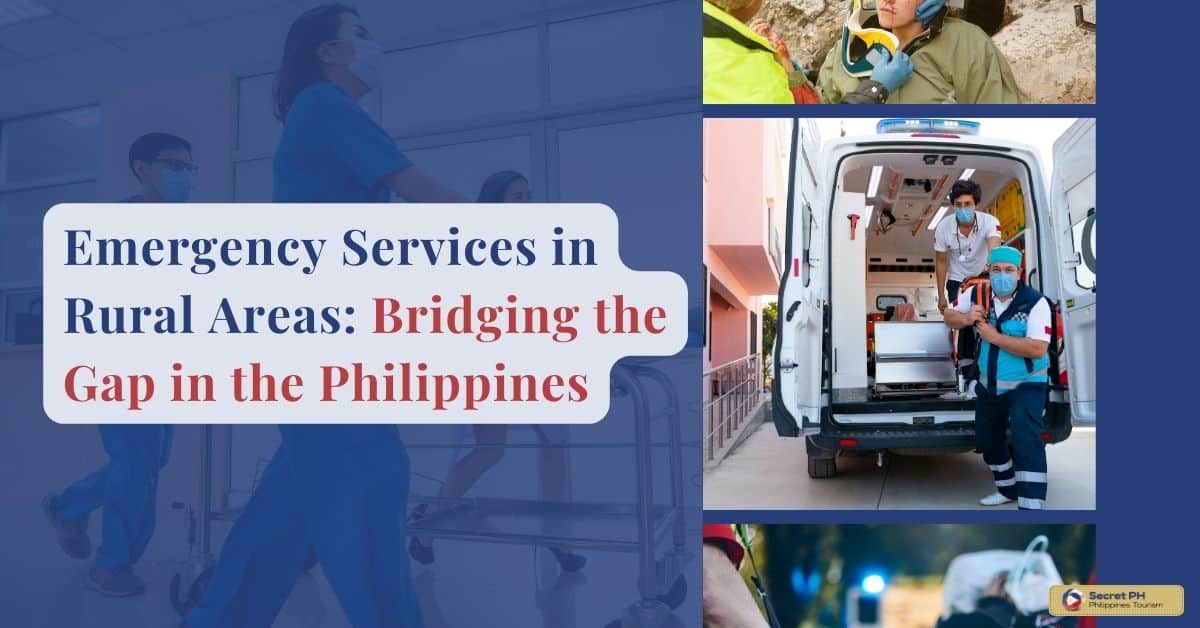
Understanding the Rural Landscape in the Philippines
Understanding the rural landscape in the Philippines is essential for improving emergency services. There are many unique and challenging issues that need to be addressed in rural areas.
For starters, rural communities often have limited access to medical facilities, lack trained medical personnel, and have inadequate infrastructure. In addition, there are high levels of poverty, limited transportation options, and a lack of awareness about emergency medical services.
In order for emergency services to be improved, it is important that we examine all aspects of the rural landscape so that any solutions are tailored to meet the unique needs of these communities. With this understanding, we can then move forward with initiatives that bridge the gap in emergency services in rural areas.

Inadequate Emergency Services in Rural Areas: The Current State of Affairs
The rural landscape in the Philippines is diverse, and the most population lives in remote and isolated areas. These communities lack access to adequate emergency services due to limited resources, a lack of trained medical personnel, and inadequate infrastructure. Understanding the challenges faced in rural areas can help provide solutions for improving emergency services.
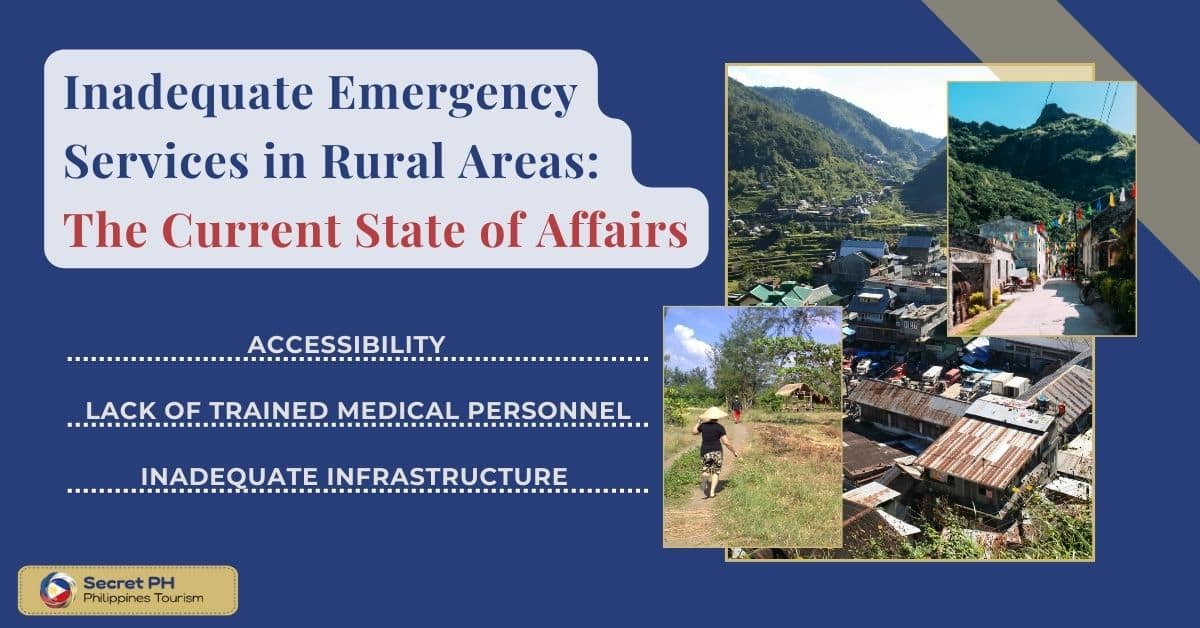
Accessibility
Rural areas are typically located far away from larger medical hubs and health centers which makes it difficult for these communities to receive quality care in a timely manner. Transportation can be an issue if an emergency vehicle cannot reach the patient in time. Additionally, access to essential medical resources and equipment such as emergency drugs, oxygen cylinders, ventilators, and ambulances can be limited or non-existent.
Lack of Trained Medical Personnel
In rural areas, there is often a shortage of trained medical personnel who are equipped with the necessary skills and resources to handle medical emergencies. This lack of personnel can make it difficult for rural areas to access the same quality healthcare services that urban centers have access to.
Inadequate Infrastructure
In many rural areas, health infrastructure is often inadequate or non-existent. The existing infrastructure may not be suitable or even capable of supporting an emergency response system. This can include a lack of basic amenities such as electricity, running water, and telephone lines which are necessary for providing effective emergency services.

Bridging the Gap: Strategies for Improving Emergency Services in Rural Areas
To bridge this gap to the lack of adequate emergency services, it is necessary to explore ways to improve access and quality of care for these communities. This can include utilizing technology, fostering community involvement, and implementing successful case studies.
1. Improving Accessibility- Enhancing transportation options to rural areas through the use of emergency vehicles and providing basic infrastructure such as electricity, running water, and telephone lines can help improve access to emergency services.
2. Increasing Awareness- Developing campaigns and initiatives that focus on educating people about how to recognize signs of medical emergencies and how to contact emergency services can help increase awareness about the importance of emergency services.
3. Training Medical Personnel- Increasing the number of trained medical personnel in rural areas by providing training and equipping them with necessary resources can help ensure quality healthcare services are accessible in times of need.
4. Utilizing Technology- Incorporating the use of technology such as drones and telemedicine can help bridge the gap in emergency services by enabling quick response times and providing remote access to medical services.
5. Community Involvement- Engaging with local communities through initiatives such as volunteer programs, health awareness campaigns, and community-based health workers can help build trust and facilitate access to emergency services.
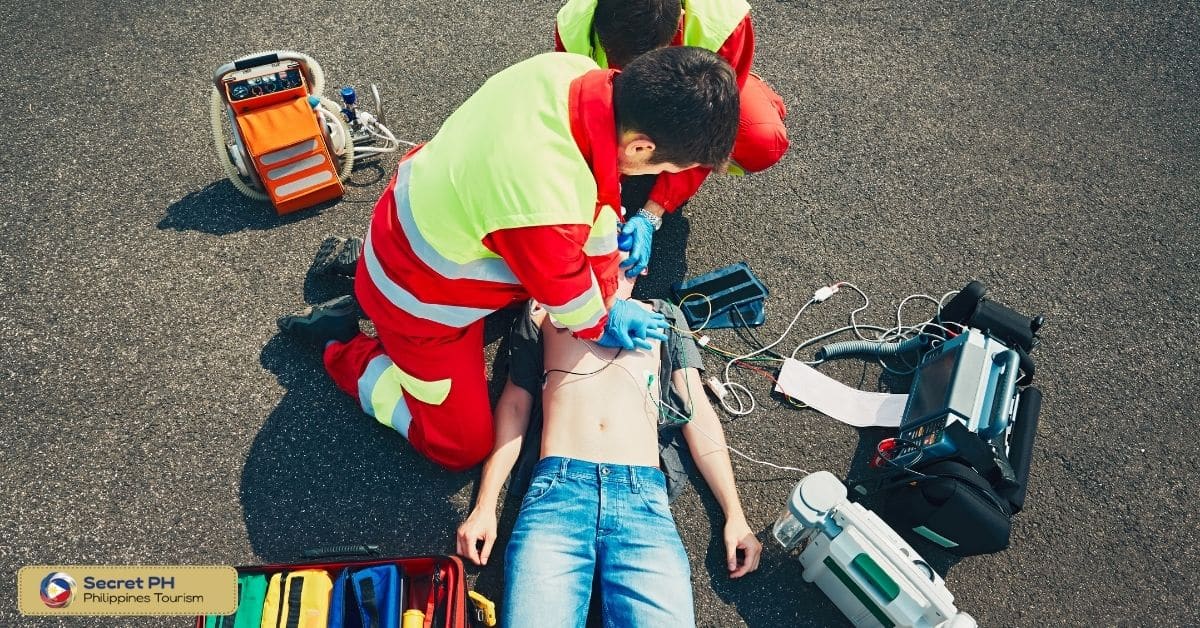
Importance of Community Participation in Strengthening Emergency Services
The success of any emergency services system depends heavily on the participation of the community it serves. It is essential to involve local communities in order for the system to be successful. In addition, community involvement ensures that the most vulnerable members are not neglected or overlooked in the process.
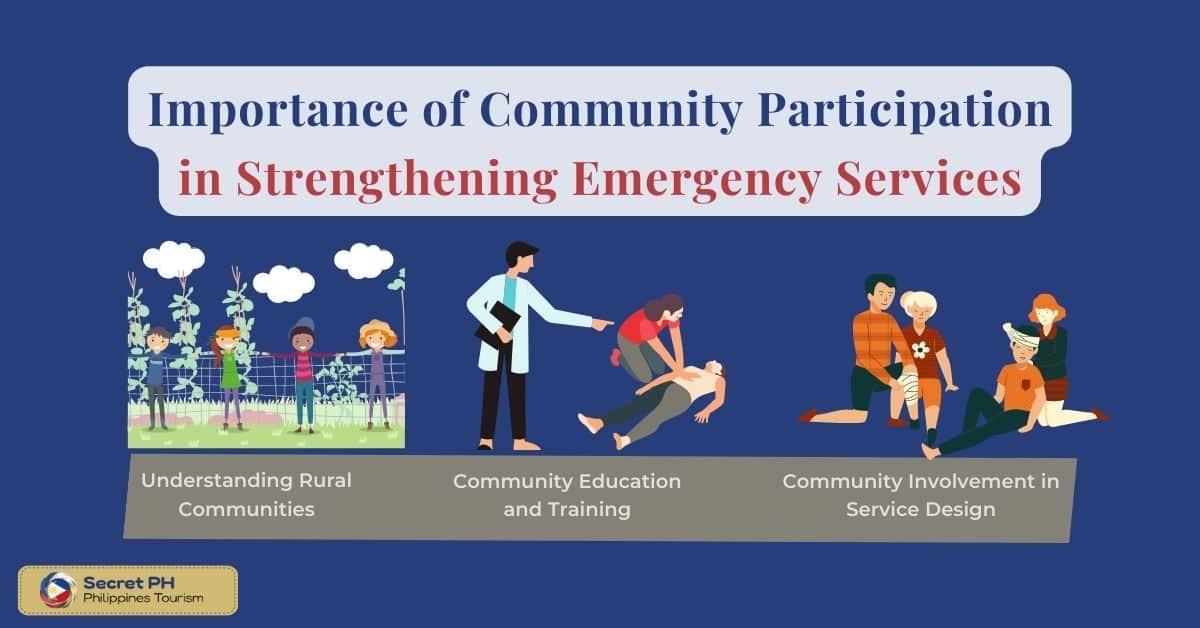
Understanding Rural Communities
In order to effectively involve rural communities in emergency services, it is important to first understand their needs and values. This involves gaining an understanding of the cultural context, local customs, and common practices when it comes to healthcare access. Knowing this information will help providers tailor services to better meet the needs of rural communities.
Community Education and Training
It is important for emergency services providers to ensure that members of local communities are educated about the importance of emergency care and how to access it. This can include providing educational materials, organizing workshops, or offering training to increase awareness about medical emergencies and how to respond. Additionally, community members should be made aware of the available emergency services and how they can access them in times of need.
Community Involvement in Service Design
Involving local communities in designing and delivering emergency services can help improve utilization and satisfaction with the services provided. Local communities should also be involved in monitoring and evaluating the effectiveness of emergency services. This will help to identify gaps in access or delivery and provide feedback for improvement.
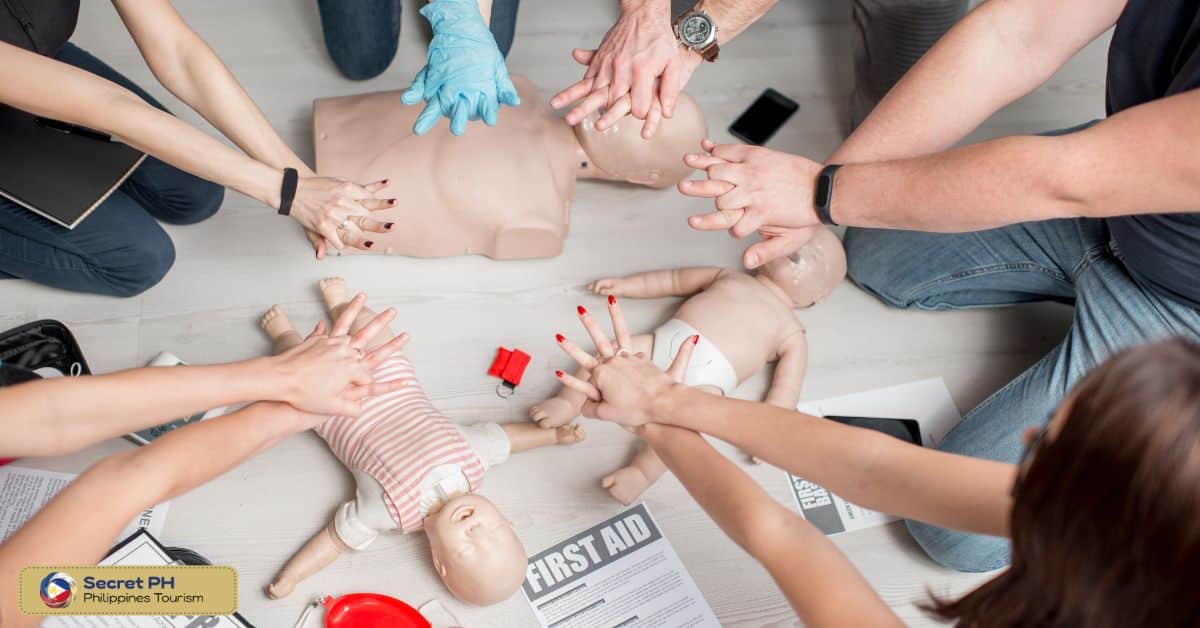
The Role of Technology in Enhancing Emergency Services in Rural Areas
Technology is an important factor when it comes to enhancing emergency services in rural areas. Technology can help bridge the gap between medical resources and rural communities. By providing quick access to healthcare services, even in remote locations.
Technology also plays an important role in improving the quality of services provided by emergency responders. By utilizing digital mapping tools, responders can gain access to valuable data such as road networks, terrain maps, and population concentrations. This information can be used to guide responders in quickly and accurately locating patients in need of medical attention.

Overcoming Resource Constraints: Funding Emergency Services in Rural Areas
Funding is a major constraint for emergency services in rural areas in the Philippines. Securing adequate resources to support medical facilities and personnel is essential for improving access and delivery of healthcare services.
Here, will explore strategies on how to overcome resource constraints to bridge the gap in emergency services in rural areas.
Government Funding: Governments should prioritize funding for emergency services, particularly in rural areas that are more vulnerable due to limited resources and infrastructure.
Private Investments: Private investments in emergency services can also be beneficial, especially when it comes to providing resources such as ambulances, medical supplies, and equipment.
Crowdfunding: With the help of technology, crowdfunding can be used to raise funds for medical resources and equipment in rural areas. This will allow individuals and organizations to contribute directly to improving emergency services in these communities.
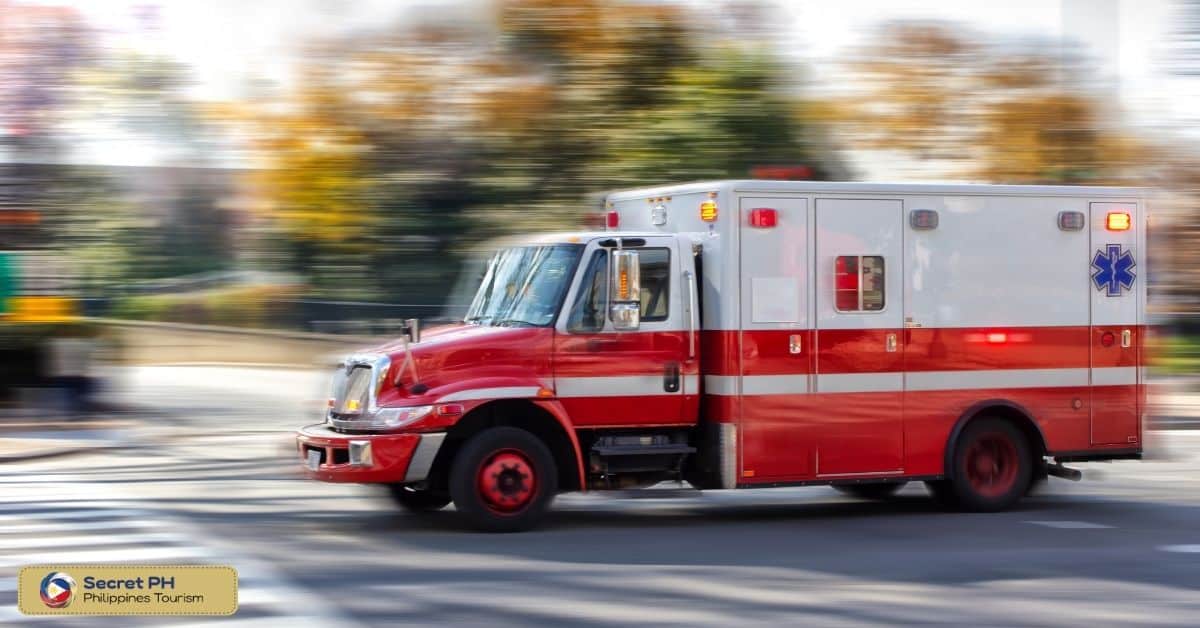
Challenges and Opportunities for Emergency Services in Rural Areas: Future Outlook
As the country continues to modernize, the need for more efficient and accessible emergency services becomes increasingly important. Here, will take a look at the current challenges facing rural areas when it comes to accessing emergency services, as well as potential opportunities to bridge the gap between urban and rural areas.
| Challenges | Opportunities |
|---|---|
| Lack of Infrastructure | Development of better infrastructure to allow for better access to emergency services |
| Insufficient Human Resources | Promote training programs and staffing models that enable more efficient deployment of personnel |
| Outdated Technology | Establish reliable communication systems and upgrade existing equipment with state-of-the-art technologies |
| Shortage of Essential Supplies | Develop strategies for efficiently delivering essential medical supplies or stocking local hospitals or pharmacies with necessary materials |
| Flawed Response Systems & Protocols | Devise effective response systems and protocols that can handle crisis situations quickly, effectively, and safely |
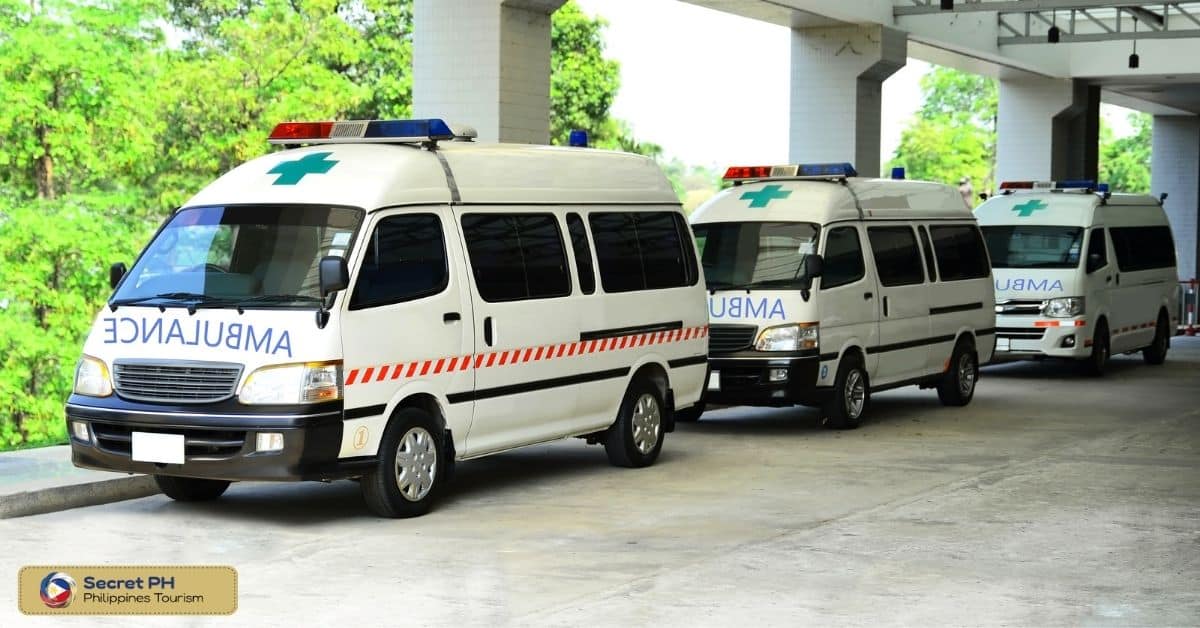
In conclusion
Emergency services in rural areas of the Philippines are not up to par with those in urban areas. Due to inadequate resources, lack of trained personnel, and limited infrastructure.
It is essential that we address these challenges by funding adequate medical supplies and equipment, providing training for medical personnel, utilizing technology to improve access and quality of care, and engaging with local communities to build trust and facilitate access.



